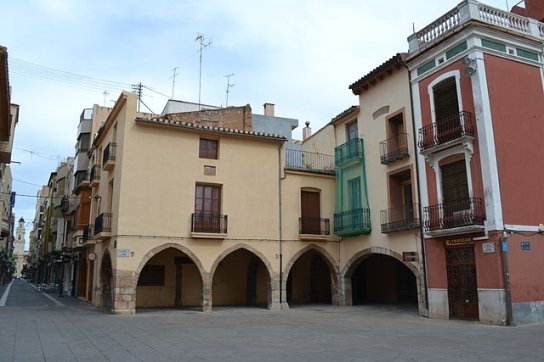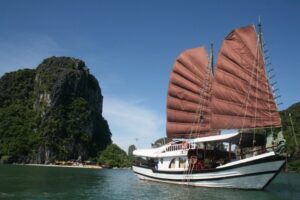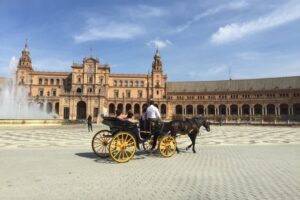Villarreal or viñlarreal, located in the province of Castellón within the Valencian Community, is a hidden gem that boasts a rich history, vibrant culture, and stunning landscapes. Known for its impressive architecture, lush natural surroundings, and lively festivals, Villarreal offers visitors a unique blend of tradition and modernity. This article delves into the city’s historical landmarks, cultural experiences, and natural attractions, showcasing why Villarreal is an essential destination for travelers seeking to explore the beauty of Spain.

Table of Contents
Historical Significance of Villarreal
Origins and Development
Villarreal’s history dates back to the 13th century when it was founded during the Reconquista. The city has evolved significantly over the centuries, transitioning from a small settlement to a bustling urban center. Its strategic location near the Millars River facilitated trade and agriculture, particularly in citrus fruits during the 19th century.
Architectural Marvels
viñlarreal is home to several architectural treasures that reflect its historical significance. The San Jaime Apóstol Archpriest Church, built in the 18th century, is a stunning example of Neoclassical architecture. Visitors can admire its grand façade and intricate interior design.
Another notable site is the Walls of viñlarreal, remnants from the 13th century that once protected the city. The Torre Motxa, part of these walls, still stands today as a testament to Villarreal’s medieval past.
Cultural Experiences
Festivals and Traditions
Viñlarreal hosts numerous festivals throughout the year that showcase its rich cultural heritage. The San Pascual Festival in May is particularly famous, featuring parades, music, and traditional dances. Visitors can also experience the Santa Caterina Fair in late November, which fills the city with festive lights and local delicacies.
Culinary Delights
The local cuisine is another highlight of Villarreal’s culture. Traditional dishes include paella, fideuà (a noodle-based dish), and various seafood specialties. Local markets offer fresh produce and artisanal products, allowing visitors to savor authentic Valencian flavors.
Natural Attractions
Viñlarreal, located in the province of Castellón in Spain, is not only rich in history and culture but also boasts several natural attractions that highlight its beautiful landscapes. Here are five noteworthy natural sites to explore in and around Villarreal:
1. El Termet Nature Area
El Termet is a serene nature area situated on the outskirts of Villarreal. It features lush greenery, walking trails, and picnic spots, making it an ideal location for outdoor enthusiasts and families. The area is also home to the **Nuestra Señora de Gracia Chapel**, which adds a cultural touch to the natural beauty. Visitors can enjoy leisurely walks while observing local flora and fauna.
2. Mouth of the River Millars Protected Landscape
This protected area is located near Villarreal and offers stunning views of the river and its surrounding ecosystems. The Mouth of the River Millars is known for its rich biodiversity, making it a prime spot for birdwatching and nature photography. Hiking trails wind through the landscape, allowing visitors to immerse themselves in the natural environment while enjoying scenic views.
3. Calduch Botanical Route
Adjacent to El Termet, the Calduch Botanical Route is a delightful pathway that showcases various plant species native to the region. This route provides an educational experience as visitors can learn about local flora while enjoying a peaceful walk through beautifully landscaped areas. It’s perfect for botany enthusiasts and those looking to connect with nature.
4. Santa Quiteria Bridge (Roman Bridge)
Although primarily a historical site, the **Santa Quiteria Bridge** spans the River Mijares and offers picturesque views of the surrounding landscape. This ancient bridge, also known as the Roman Bridge, provides access to scenic walking paths along the riverbanks, where visitors can enjoy nature while exploring the history of the area.
5. Sierra de Espino Natural Park
A short drive from Viñlarreal leads you to Sierra de Espino Natural Park, which features rugged terrain, hiking trails, and breathtaking views of the surrounding mountains and valleys. This park is ideal for hiking, mountain biking, and enjoying outdoor activities amidst nature’s beauty. The diverse wildlife and plant life make it a great destination for nature lovers.
Sports Attractions in Villarreal
1. Estadio de la Cerámica
Overview: The home ground of viñlarreal CF, Estadio de la Cerámica, has a capacity of approximately 25,000 spectators. It is known for its vibrant atmosphere during matches.
Features: The stadium has undergone several renovations to enhance fan experience and facilities. It also hosts various events beyond football, including concerts and community gatherings.
2. Villarreal CF Training Facilities
– Camino Miralcamp Complex: This state-of-the-art training facility is where all teams, from youth to first team, train. It includes several pitches and training areas that are open to the public.
– Youth Academy: Viñlarreal CF is renowned for its youth academy, which has produced numerous professional players. The academy’s success attracts aspiring young footballers from around the region.
3. Football Tours and Experiences
– Behind-the-Scenes Tours: Visitors can take guided tours of Estadio de la Cerámica, which include access to locker rooms, pitch-side views, and historical insights about the club.
– Football Camps: The club offers training camps for youth teams and schools, allowing participants to learn from professional coaches and experience top-level training environments[1].
4. Local Football Clubs and Community Engagement
– Grassroots Football: Numerous local clubs operate within Villarreal, promoting football at a grassroots level. These clubs often collaborate with Villarreal CF for training sessions and events.
– Community Programs: Villarreal CF engages with the local community through initiatives that promote sports participation among children and young adults.
5. Sports Events and Competitions
– La Liga Matches: Regular matches in Spain’s top division attract fans from across the region, creating a festive atmosphere in the city on match days.
– International Competitions: Villarreal CF’s participation in UEFA competitions brings international attention to the city, enhancing its reputation as a footballing hub.
Impact of Football on Locals
Economic Impact
– Job Creation: The presence of Villarreal CF contributes significantly to local employment opportunities, from stadium staff to hospitality services during match days.
– Tourism Boost: The club attracts visitors for matches and tours, benefiting local businesses such as hotels, restaurants, and shops.
Social Cohesion
– Community Identity: Football fosters a strong sense of identity among locals. Support for Villarreal CF unites residents across different backgrounds, creating a shared passion that enhances community spirit.
– Youth Development: Through its youth academy and local partnerships, Villarreal CF provides young people with opportunities to develop their skills both on and off the pitch.
Cultural Significance
– Tradition of Support: Football is deeply embedded in the cultural fabric of Villarreal. Match days are significant events that bring families and friends together to support their team.
– Local Pride: Successes achieved by Villarreal CF instill pride among locals, as they celebrate their team’s accomplishments on national and international stages.
Health Benefits
– Active Lifestyle Promotion: The emphasis on football encourages physical activity among residents, contributing to healthier lifestyles through participation in sports.
Educational Opportunities
– Scholarships and Training Programs: The club offers scholarships for talented young athletes, providing them with educational opportunities alongside their athletic development.
FAQs
Q1. What is Villarreal known for?
Villarreal is known for its rich history, stunning architecture, vibrant festivals, and thriving ceramic industry.
Q2. When is the best time to visit Villarreal?
The best time to visit Villarreal is during spring (March to June) or fall (September to November) when the weather is mild and pleasant.
Q3. Are there any outdoor activities in Villarreal?
Yes! Visitors can enjoy hiking in natural areas like El Termet or exploring parks within the city.
Q4. What traditional dishes should I try in Villarreal?
When visiting Villarreal, be sure to try local specialties such as paella and fideuà.
Q5. How can I get to Villarreal?
Villarreal can be accessed by train or bus from major cities like Valencia or Castellón. The nearest airport is Valencia Airport.
Villarreal stands out as a destination that encapsulates both historical charm and modern vibrancy. Its unique blend of cultural experiences, architectural wonders, and natural beauty makes it an ideal place for travelers seeking an authentic Spanish experience. Whether you’re wandering through ancient streets or enjoying local cuisine at a bustling market, Villarreal promises unforgettable memories for every visitor.




